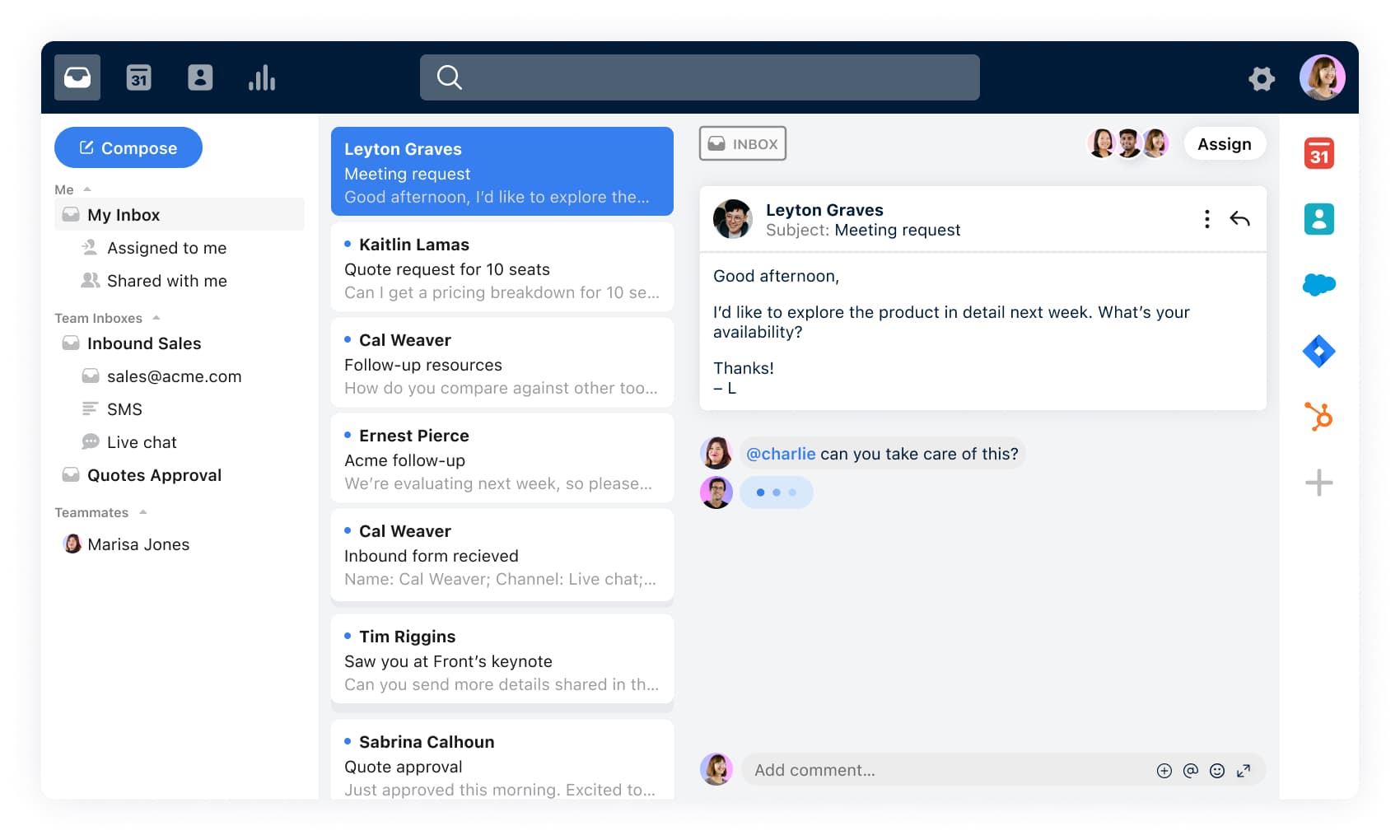Win more deals and accelerate outcomes
Boost seller productivity and hit company goals. Front helps inbound sales teams streamline communication to route leads faster and generate quotes quicker.

Propel revenue growth
Deliver a cohesive experience from quote to contract that’s sure to impress buyers and win their business.
Maximize team productivity
Beat the competition with seamless behind-the-scenes coordination and exceptional service at scale.
Differentiate with service
Get insight into individual and team performance to uplevel service quality and boost revenue operations.
9,000+ businesses use Front to close more deals
Front puts a science behind our business. We have concrete numbers that we can communicate to our clients and say ‘this is what you can expect when you work with us.’
Stop revenue from slipping through the cracks
Centralize all your sales channels
Make it easy to meet prospects where they are — across email, chat, SMS, and more — in one unified, easy-to-use communication platform.
Automate your workflows
Keep the team focused on winning new customers by automating away routine tasks, like manual lead routing or meeting scheduling.
Streamline escalations & approvals
Drive better visibility and alignment on top-priority requests. Make it easy to loop in experts internally, draft responses together, or share context with a click.
Know what metrics to improve
Get insights into the sales cycle. Quickly identify areas for improvement, such as response time, customer satisfaction, staffing schedules, and team performance.
Multiply your sales efficiency
Team collaboration
Real-time shared drafts and comments for quick and seamless coordination
Workflow automation
No-code rules automatically route messages and speed time to resolution
Omnichannel inbox
A shared workspace that aggregates customer communication across multiple channels
Analytics
Metrics and insights allows you to uplevel the customer experience and improve business efficiency
Artificial Intelligence
Productivity and efficiency will increase with features such as AI-assisted drafts and summaries
Integrations & Open API
All the context, data, and tools you need without having to leave Front and hop between multiple tabs or systems
A customer operations platform that scales with you
Distribution groups and shared inboxes are noisy and chaotic
Unable to build workflow automation
No native analytics or insights into key performance
Help desks
Deals do not take place in ticketing formats
Team collaboration is clunky and disjointed
Long and costly onboarding for teams and admins
faster response times than competitors
to produce a quote compared to 8 mins before Front
ROI with over $700K in cost savings
Response time is everything. Before, it was difficult to route an email to the right person in order to get a response. Now it can be actioned as soon as possible.




